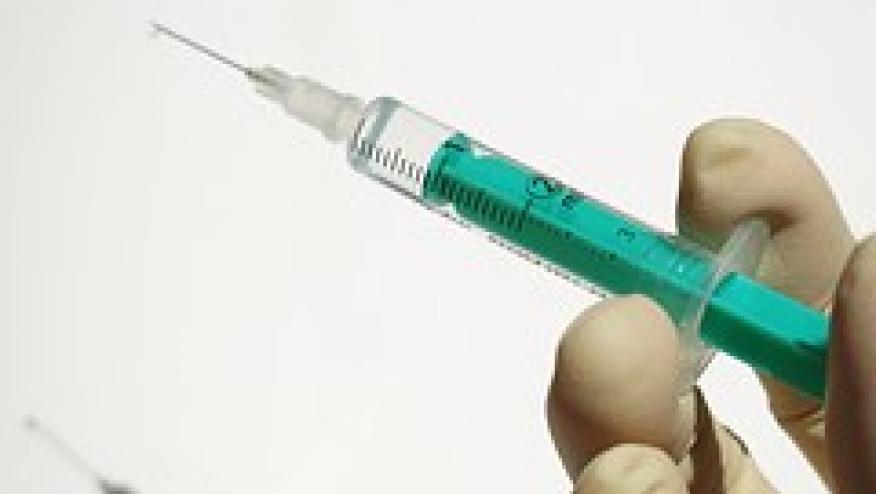Infection Rates Stable in JIA With Anti-TNF Therapy Save

Children with juvenile idiopathic arthritis (JIA) treated with biologic therapies with or without methotrexate were at no higher risk for hospitalized infections than those treated with methotrexate alone, a review of national Medicaid claims data found.
Among children treated with a tumor necrosis factor (TNF) inhibitor alone compared with those taking methotrexate alone, the adjusted hazard ratio for infection requiring hospitalization was a nonsignificant 1.19 (95% CI 0.72-1.94), according to Timothy Beukelman, MD, and colleagues from the University of Alabama at Birmingham.
Similarly, for those who received a TNF inhibitor plus methotrexate, the adjusted HR was 1.23 (95% CI 0.69-2.17), the researchers reported online in Arthritis Research & Therapy.
Children with JIA are already at increased risk of infection because of the disease process itself, and this risk is heightened by their need for treatment with immunosuppressives -- and particularly biologics, which have been linked with serious infections -- to prevent irreversible damage and disability.
Previous studies examining infection rates and treatments in children with JIA have had conflicting results, with some finding no increases with methotrexate or TNF inhibitors but others suggesting a greater risk with TNF inhibitor treatment.
"Thus, there is a clear need for comparative studies of the relative safety of biologic agents in JIA," Beukelman and colleagues stated.
Current treatment recommendations for JIA advise using a combination of methotrexate plus a TNF inhibitor rather than a TNF inhibitor alone because of greater efficacy, but many children today are given TNF inhibition monotherapy.
"Importantly, the relative safety of combination therapy versus monotherapy is unclear," the authors wrote.
To address these safety concerns, they compared rates of hospitalized infection among children with JIA in the U.S. Medicaid administrative claims database who were new users of biologics and those starting treatment with methotrexate alone.
Biologics analyzed included etanercept (Enbrel), infliximab (Remicade), adalimumab (Humira), golimumab (Simponi), certolizumab (Cimzia), and anakinra (Kineret). Although the analysis did include abatacept, canakinumab, or tocilizumab, inadequate numbers omitted them from the final analysis.
Because the systemic subtype of JIA differs in pathogenesis and treatment from other subtypes, in particular, with more use of the interleukin-1 receptor antagonist anakinra, patients with that diagnosis were analyzed separately.
Concomitant glucocorticoid use was classified as none, low dose (less than 10 mg prednisone per day), or high dose (10 mg or more per day).
A total of 3,075 patients were new users of methotrexate (160 of whom had systemic JIA), 2,713 initiated treatment with a TNF inhibitor, and 247 started treatment with anakinra during the years 2000 to 2010.
Patients starting a TNF inhibitor were older than those starting methotrexate (11 vs 9 years), while those initiating anakinra had more prednisone use and more frequent hospitalizations during the 6-month baseline period before starting treatment.
Crude infection rates were similar for patients on methotrexate alone, at 1.46/100 patient-years, for those on TNF inhibitor monotherapy, at 1.54/100, and for those given both methotrexate plus a TNF inhibitor, at 1.74/100. For children with systemic JIA given methotrexate, the rate was 2.64/100, and for those given anakinra, the infection rate was "markedly higher," at 8.41/100 patient-years.
The most common hospital admissions were for pneumonia, in 19%, bladder and kidney infections in 13%, and cellulitis and abscesses in 10%.
Factors aside from methotrexate and anti-TNF use that were identified as possibly contributing to rates of admission for infection were having a hospitalization for infection during the 60-day baseline period before initiating the new medication, with an adjusted HR of 3.28 (95% CI 1.44-7.48), and high-dose prednisone use during the baseline period, with an adjusted HR of 2.03 (95% CI 1.21-3.39).
When the researchers looked at infection rates for the individual TNF inhibitors, they found an increased risk for adalimumab compared with etanercept, with an adjusted HR of 2.39 (95% CI 1.21-4.72).
However, there were differences between those two groups, with 28.2% of those starting adalimumab having had previous biologic use compared with only 1% of those starting etanercept (P<0.0001). "New users of adalimumab likely had more refractory disease and a potentially resultant increased baseline risk of infection," the authors noted.
They also found significantly higher risks for patients starting anakinra treatment compared with methotrexate, with an adjusted HR of 3.53 (95% CI 1.83-6.82), but this was attenuated when the comparator group only included systemic JIA patients starting methotrexate (HR 2.69, 95% CI 0.82-8.82).
"It can be assumed that most children receiving anakinra had systemic JIA," the researchers commented, although this could not be verified from the database.
"Very little is known about background infection rates among children with systemic JIA compared with other categories of JIA, but it is plausible that the infection risk may be much greater," they suggested. "More studies are needed to elucidate the risks of infection associated with systemic JIA and its treatment," they concluded.
The study was supported by the Agency for Healthcare Research and Quality.








If you are a health practitioner, you may Login/Register to comment.
Due to the nature of these comment forums, only health practitioners are allowed to comment at this time.